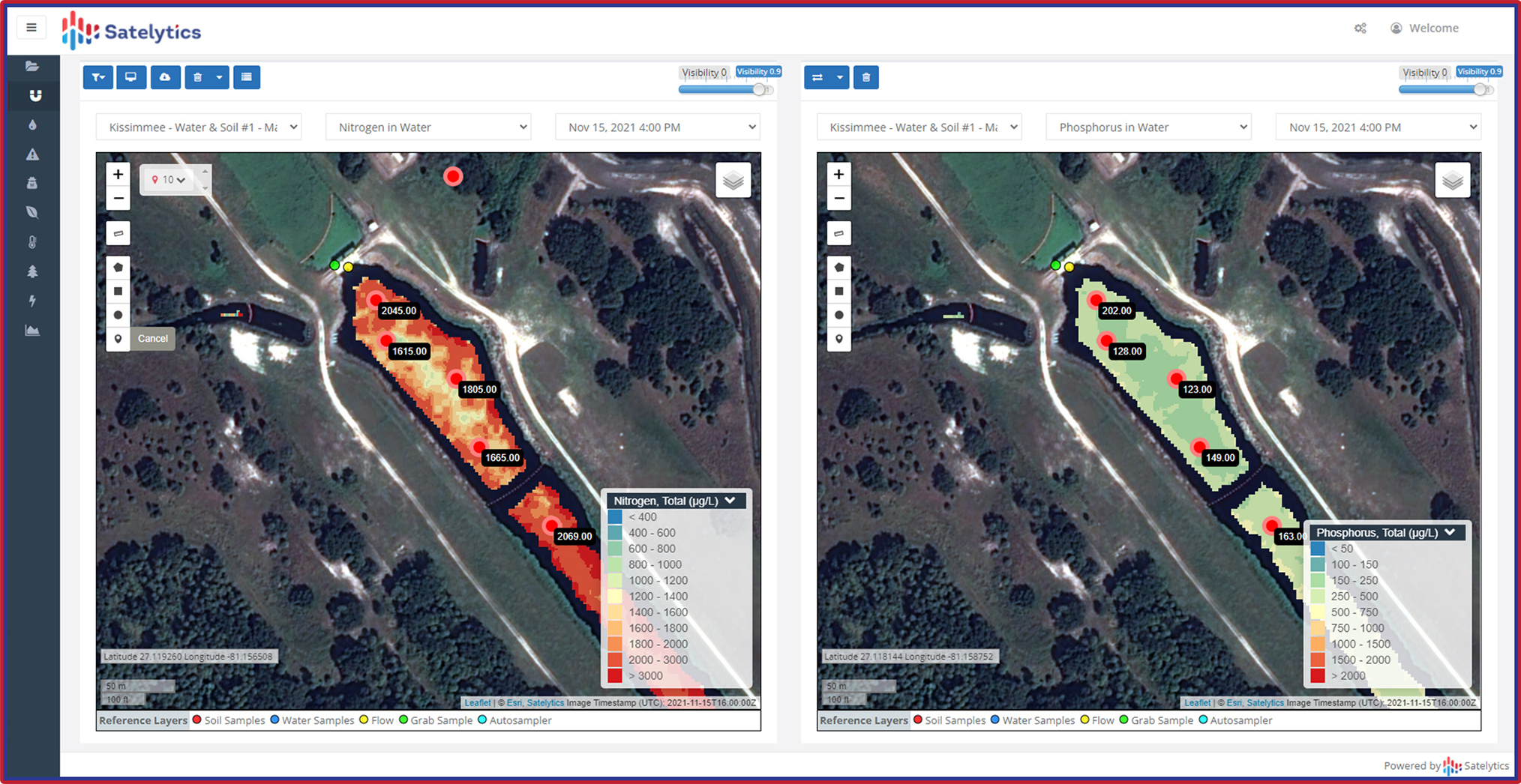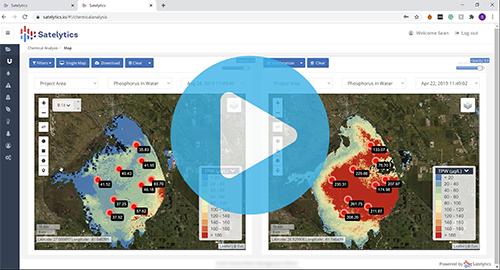
• Water & Wastewater

• Water & Wastewater
As the summer heats up, environmental managers brace for the inevitable surge in harmful algal blooms (HABs) across water bodies. On the shallow southwestern shores of Lake Erie, where the Satelytics team operates, the link between agricultural runoff and HABs is all too clear. Agricultural practices contribute significantly to nutrient pollution, leading to the proliferation of cyanobacteria and subsequent HABs. Understanding this connection is crucial for effective water quality management and ecosystem health.
The Role of Agricultural Runoff
Agricultural runoff is a primary source of nutrient pollution in our water bodies. Fertilizers rich in phosphorus and nitrogen are essential for crop growth but can wreak havoc when washed into streams, rivers, and lakes. Rainfall and irrigation practices often lead to the leaching of these nutrients from fields, transporting them into nearby waterbodies.
Phosphorus: This nutrient, found in fertilizers, is a significant contributor to HABs. When rain flushes phosphorus into waterbodies, it creates an ideal environment for algal growth. Satelytics measures phosphorus concentrations on land and in water in parts per billion, enabling precise identification and remediation of runoff sources.
Nitrogen: Like phosphorus, nitrogen is prevalent on farms, lawns, and golf courses. It fuels algae growth, further exacerbating water quality issues. Satelytics’ remote sensing technology accurately quantifies nitrogen levels, providing crucial data for environmental monitoring and management.

Measure both nitrogen and phosphorus in water and on land.
Impact of Livestock Operations
Livestock operations can also negatively impact water quality. Manure from these operations often contains high levels of nutrients and pathogens. When not managed properly, runoff from these areas can contaminate water sources, contributing to the proliferation of HABs and posing risks to human and animal health.
Consequences of Harmful Algal Blooms
HABs pose significant risks to public health, recreational activities, and ecosystem stability. Cyanobacteria, which dominate HABs, produce toxins harmful to both humans and animals. Exposure can lead to respiratory issues, skin irritation, and even neurological effects. Additionally, HABs degrade water quality, affecting recreational activities such as swimming and fishing, and can lead to fish kills, disrupting local ecosystems.
Satelytics’ Data-Driven Solutions
Satelytics leverages satellite imagery and remote sensing to monitor entire waterbodies, providing real-time data on nutrient levels and potential HAB outbreaks. Our Constant Vigilance™ algorithms identify unique spectral bands and their intensity to detect and quantify contaminants. This proactive approach enables environmental managers to take timely action, mitigating the impact of HABs before they become a severe issue.

View a short demonstration of our water quality measurement capabilities.
Satelytics also offers tools for identifying sources of sediment loading to plan preventative and remediation measures. Turbidity and bathymetry measurements help track sediment build-up around infrastructure, ensuring comprehensive environmental monitoring.
Stay ahead of harmful algal blooms with Satelytics’ cutting-edge water quality monitoring solutions. Reach out today to learn how our data-driven approach can help you maintain healthy waterbodies and enjoy a safe, relaxing summer. For more information, contact Satelytics and explore how our remote sensing technology can revolutionize your environmental monitoring efforts.